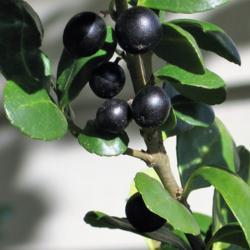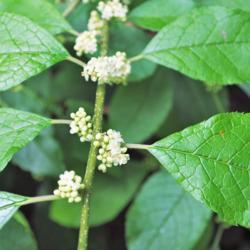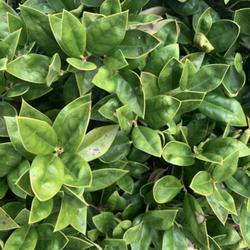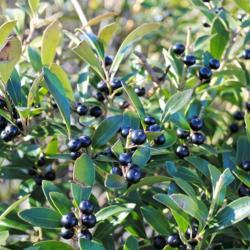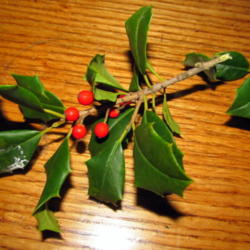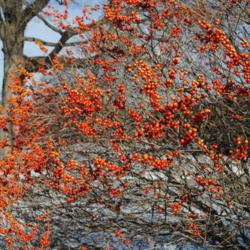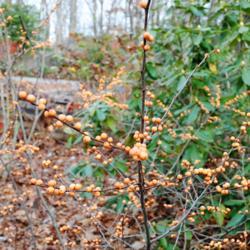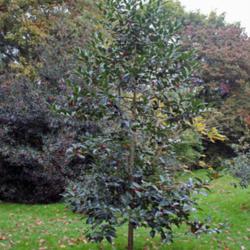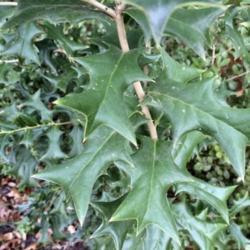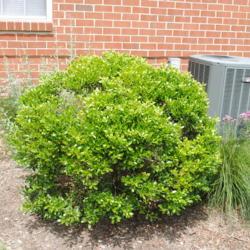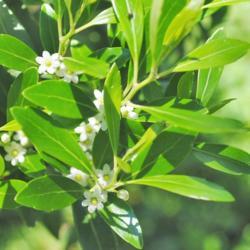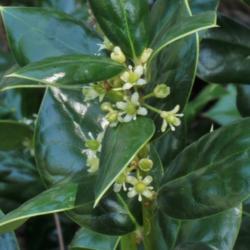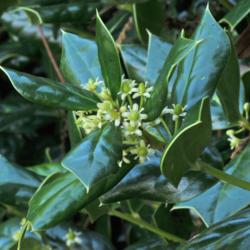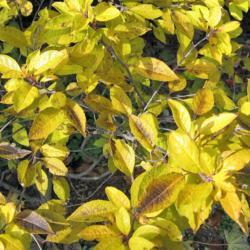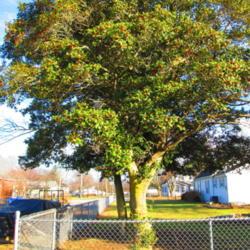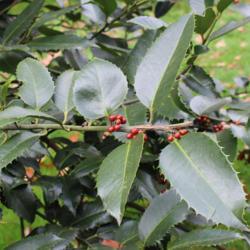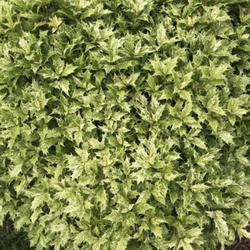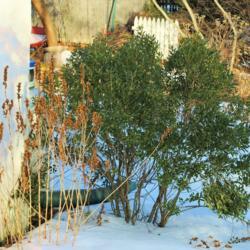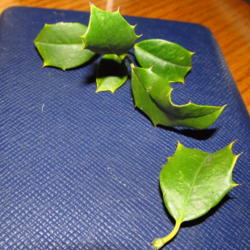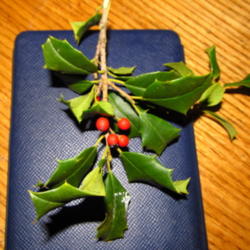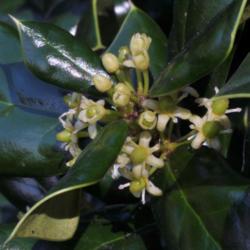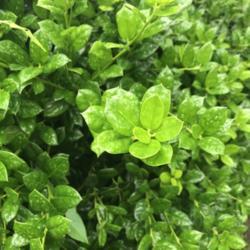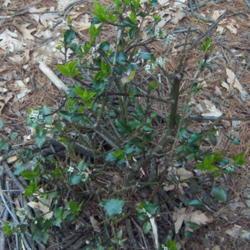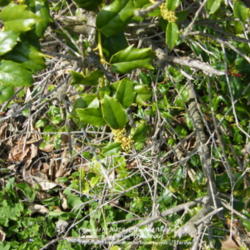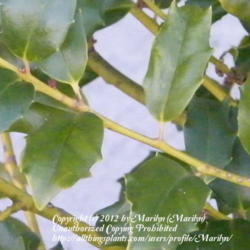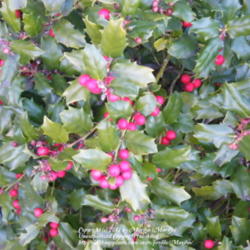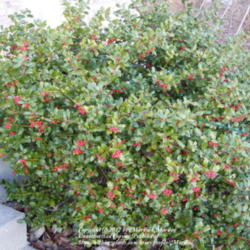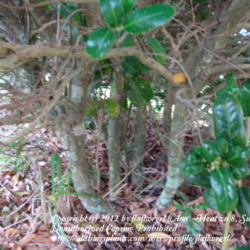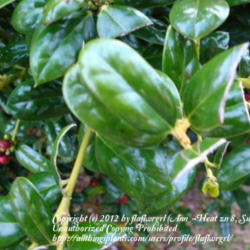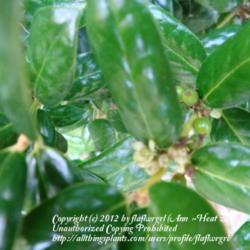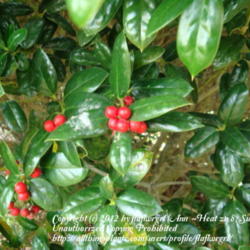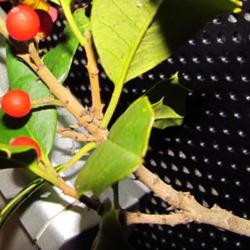"Plants in this genus have simple, alternate glossy leaves, typically with a spiny toothed, or serrated leaf margin. The inconspicuous flower is greenish white, with four petals. They are generally dioecious, with male and female flowers on different plants, although there are exceptions.
The small fruits of Ilex, although often referred to as berries, are technically drupes. They range in color from red to brown to black, and rarely green or yellow. The "bones" contain up to ten seeds each. Some species produce fruits parthenogenetically, such as the cultivar 'Nellie R. Stevens'. The fruits ripen in winter and thus provide winter colour contrast between the bright red of the fruits and the glossy green evergreen leaves. Hence the cut branches, especially of I. aquifolium, are widely used in Christmas decoration. The fruits are generally slightly toxic to humans, and can cause vomiting and diarrhea when ingested. However, they are a very important food source for birds and other wildlife.
The berries of various species contain Theobromine, a compound similar to caffeine. In very small doses, theobromine and other caffeines only mildly stimulate the nervous system. However larger amounts can cause dizziness, stomach pain, nausea, diarrhoea, elevated pulse rate, and low blood pressure, as well as drowsiness.
Berries attract birds that eat them after the frosts have reduced toxicity. However, if household pets ingest holly, they are very liable to be poisoned, and it is a very good idea to keep holly decorations out of reach of pets and/or children."
Taken from wikipedia's page at:
http://en.wikipedia.org/wiki/H...


